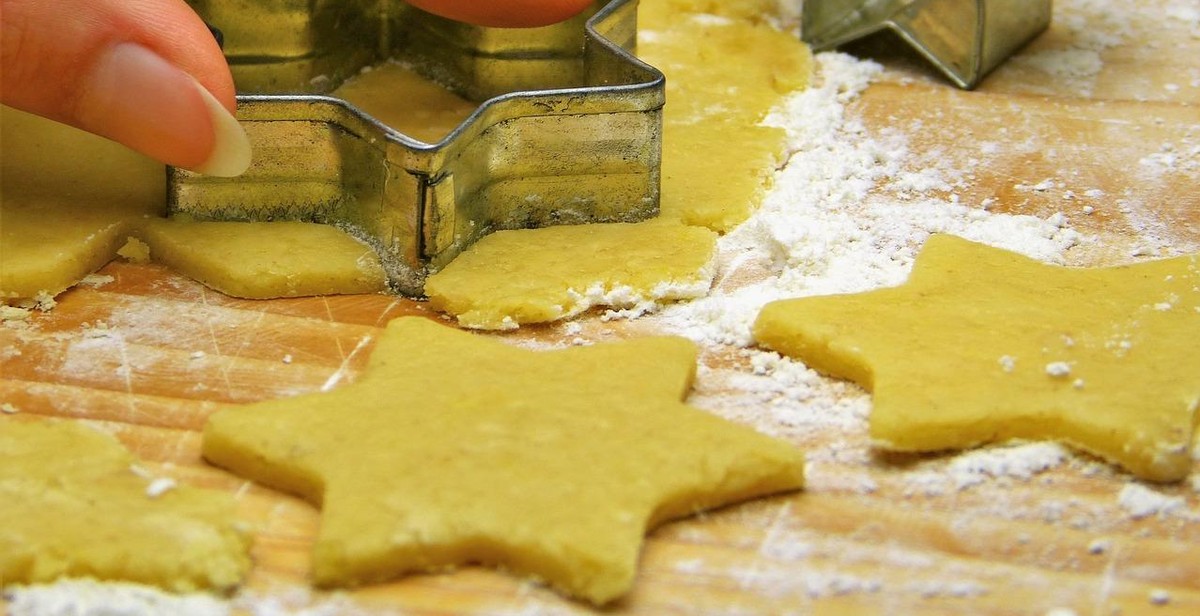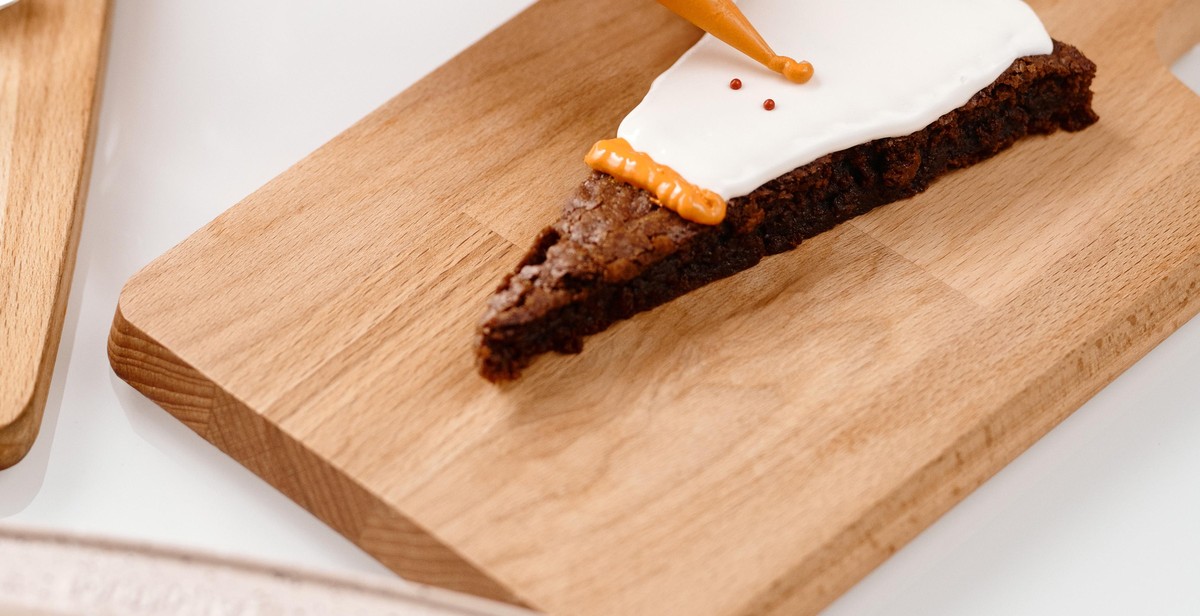Introduction: How to Make Delicious Homemade Gluten-Free Cookies
Do you love cookies but struggle with gluten intolerance or sensitivity? Fear not! With this guide, you can learn how to make delicious homemade gluten-free cookies that are just as tasty as their gluten-filled counterparts. Gluten-free baking can be a bit tricky, but with the right ingredients and techniques, you can create cookies that are soft, chewy, and full of flavor.
In this article, we will cover the basics of gluten-free baking and provide you with a simple recipe for gluten-free chocolate chip cookies. Whether you’re new to gluten-free baking or a seasoned pro, this guide has something for everyone.
The Importance of Gluten-Free Baking
Gluten is a protein found in wheat, barley, and rye. For those with celiac disease or gluten sensitivity, consuming gluten can cause a range of symptoms, including digestive issues, headaches, and fatigue. This makes it essential to avoid gluten in your diet.
However, many baked goods, including cookies, are traditionally made with wheat flour, which contains gluten. This can make it challenging to find delicious gluten-free options. By learning how to make your own gluten-free cookies, you can enjoy a sweet treat without compromising your health.
Gluten-Free Baking Tips
- Use gluten-free flour blends that are specifically designed for baking.
- Add xanthan gum or guar gum to help bind the ingredients together.
- Experiment with different types of gluten-free flours, such as almond or coconut flour.
- Be careful when using oats, as they may be contaminated with gluten during processing.
- Measure your ingredients carefully to ensure the right balance of flavors and textures.
With these tips in mind, let’s dive into the recipe for gluten-free chocolate chip cookies!

Why Make Gluten-Free Cookies?
Gluten-free cookies have become increasingly popular among people who are sensitive to gluten, those with celiac disease, or those who simply want to lead a healthier lifestyle. Here are some reasons why you should consider making gluten-free cookies:
Health Benefits of Gluten-Free Cookies
Gluten-free cookies are made without wheat, barley, or rye flour, which are the primary sources of gluten. By eliminating gluten from your diet, you may experience several health benefits such as:
- Improved digestion: Gluten can cause inflammation in the gut, leading to digestive issues such as bloating, gas, and diarrhea. By avoiding gluten, you can improve your digestion and reduce these symptoms.
- Weight loss: Many gluten-free products are lower in calories and fat than their gluten-containing counterparts. By choosing gluten-free cookies, you can indulge in a sweet treat without sabotaging your weight loss goals.
- Better nutrient absorption: Gluten can interfere with the absorption of certain nutrients in the body, such as iron, calcium, and vitamin D. By avoiding gluten, you can ensure that your body is absorbing these nutrients properly.
Gluten-Free Cookies are Suitable for Everyone
Gluten-free cookies are not just for people with celiac disease or gluten sensitivity. In fact, they are suitable for everyone, including those who want to:
- Reduce their gluten intake: Even if you are not sensitive to gluten, reducing your intake of this protein can have health benefits.
- Try something new: Gluten-free cookies are a delicious and healthy alternative to traditional cookies. They come in a variety of flavors and textures, so there is something for everyone to enjoy.
- Cater to guests with dietary restrictions: If you are hosting a party or gathering, making gluten-free cookies is a great way to accommodate guests with celiac disease or gluten sensitivity.
Overall, making gluten-free cookies is a great way to enjoy a sweet treat while also reaping the health benefits of a gluten-free diet. Whether you are sensitive to gluten or simply looking for a healthier alternative to traditional cookies, gluten-free cookies are a delicious and satisfying choice.

Ingredients for Gluten-Free Cookies
Flours
When making gluten-free cookies, it’s important to use a blend of flours to achieve the right texture and flavor. A common blend is a mix of rice flour, almond flour, and tapioca flour. Rice flour is a staple in gluten-free baking and provides a neutral flavor and light texture. Almond flour adds a nutty flavor and helps with moisture retention. Tapioca flour helps bind the ingredients together and adds a chewy texture.
Other gluten-free flours that can be used in cookie recipes include coconut flour, buckwheat flour, and sorghum flour. It’s important to note that each flour has a unique flavor and texture, so experiment with different blends to find the perfect combination for your recipe.
Sweeteners
Traditional cookie recipes often call for granulated sugar, but there are many gluten-free sweeteners that can be used instead. Honey, maple syrup, and agave nectar are all natural sweeteners that add a rich flavor to cookies. Coconut sugar is another great option that has a lower glycemic index than traditional sugar.
When using liquid sweeteners, it’s important to adjust the amount of liquid in the recipe to maintain the proper consistency. It’s also important to note that natural sweeteners may brown faster than granulated sugar, so keep an eye on your cookies while they bake.
Fats
Fats are an essential ingredient in cookie recipes, as they add moisture and flavor. When making gluten-free cookies, it’s important to use a fat that is solid at room temperature, such as butter or coconut oil. This will help the cookies hold their shape and prevent spreading.
Other fats that can be used in gluten-free cookie recipes include vegetable shortening and nut butters. It’s important to note that nut butters will add a distinct flavor to your cookies, so choose a nut butter that complements the other flavors in your recipe.
Leavening Agents
Leavening agents are what give cookies their rise and texture. Traditional cookie recipes often call for baking powder and baking soda, but gluten-free cookies may require different leavening agents.
Xanthan gum is a common ingredient in gluten-free baking, as it helps bind the ingredients together and adds a chewy texture. Cream of tartar is another leavening agent that can be used in place of baking powder in some recipes.
| Flours | Sweeteners | Fats | Leavening Agents |
|---|---|---|---|
| Rice flour | Honey | Butter | Xanthan gum |
| Almond flour | Maple syrup | Coconut oil | Cream of tartar |
| Tapioca flour | Agave nectar | Vegetable shortening |

Tips for Making Perfect Gluten-Free Cookies
Making gluten-free cookies can be a bit tricky, but with the right techniques, you can easily make delicious and perfect gluten-free cookies. Here are some tips that will help you make gluten-free cookies that are sure to impress.
Measure Ingredients Accurately
When making gluten-free cookies, it’s essential to measure all the ingredients accurately. Unlike traditional cookies, gluten-free cookies require precise measurements. Using too much or too little of any ingredient can significantly affect the texture and taste of the cookies. To ensure that your cookies come out perfect every time, use a kitchen scale to weigh your ingredients accurately.
Chill the Dough
Chilling the dough is an essential step when making gluten-free cookies. It helps the dough to firm up, making it easier to handle. Chilling also helps the cookies to hold their shape better while baking, resulting in perfectly shaped cookies. Always refrigerate your dough for at least 30 minutes before scooping and baking.
Use Parchment Paper
Using parchment paper is a must when making gluten-free cookies. It prevents the cookies from sticking to the baking sheet and ensures even baking. Parchment paper also makes it easier to remove the cookies from the sheet without breaking them. Place a sheet of parchment paper on your baking sheet before placing the cookie dough on it.
Don’t Overcrowd the Baking Sheet
Overcrowding the baking sheet is a common mistake when making cookies. When you overcrowd the sheet, the cookies will not bake evenly, and they may even stick together. Make sure to leave enough space between each cookie to allow for even baking. A good rule of thumb is to leave about 2 inches between each cookie.
| Quick Recap: |
|---|
| Measure all ingredients accurately |
| Chill the dough for at least 30 minutes |
| Use parchment paper to prevent sticking |
| Don’t overcrowd the baking sheet |
By following these simple tips, you can make perfect gluten-free cookies every time. With a little practice, you will be able to create delicious and impressive cookies that everyone will love.

Recipe for Delicious Homemade Gluten-Free Cookies
If you’re looking for a gluten-free cookie recipe that’s easy to make and tastes delicious, look no further! These gluten-free cookies are made with simple ingredients and are sure to satisfy your sweet tooth.
Ingredients:
- 1 cup almond flour
- 1/2 cup gluten-free oats
- 1/4 cup coconut sugar
- 1/4 cup maple syrup
- 1/4 cup coconut oil, melted
- 1 tsp vanilla extract
- 1/2 tsp baking soda
- 1/4 tsp salt
- 1/2 cup dark chocolate chips (optional)
Instructions:
- Preheat your oven to 350°F (180°C) and line a baking sheet with parchment paper.
- In a large mixing bowl, combine the almond flour, gluten-free oats, coconut sugar, baking soda, and salt.
- In a separate mixing bowl, whisk together the melted coconut oil, maple syrup, and vanilla extract.
- Add the wet ingredients to the dry ingredients and mix until well combined.
- If using, fold in the dark chocolate chips.
- Roll the cookie dough into small balls and place them on the prepared baking sheet. Flatten the balls slightly with your fingers or a fork.
- Bake for 12-15 minutes or until the edges are golden brown.
- Remove from the oven and let the cookies cool on the baking sheet for 5 minutes before transferring them to a wire rack to cool completely.
| Calories | Protein | Fat | Carbs | Sugar | Fiber |
|---|---|---|---|---|---|
| 120 | 2g | 8g | 11g | 6g | 2g |
Enjoy your delicious homemade gluten-free cookies with a glass of almond milk or your favorite hot beverage!
